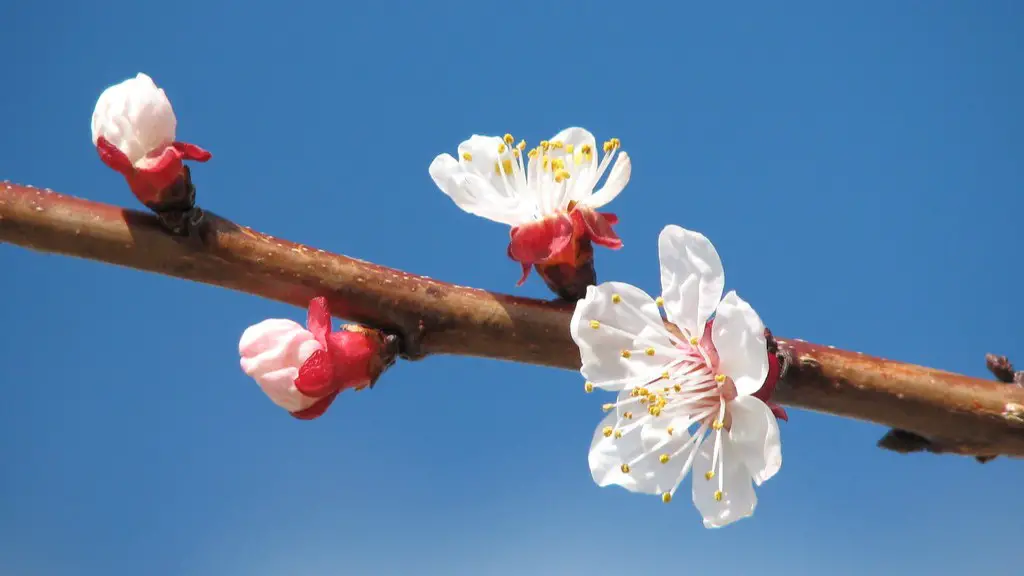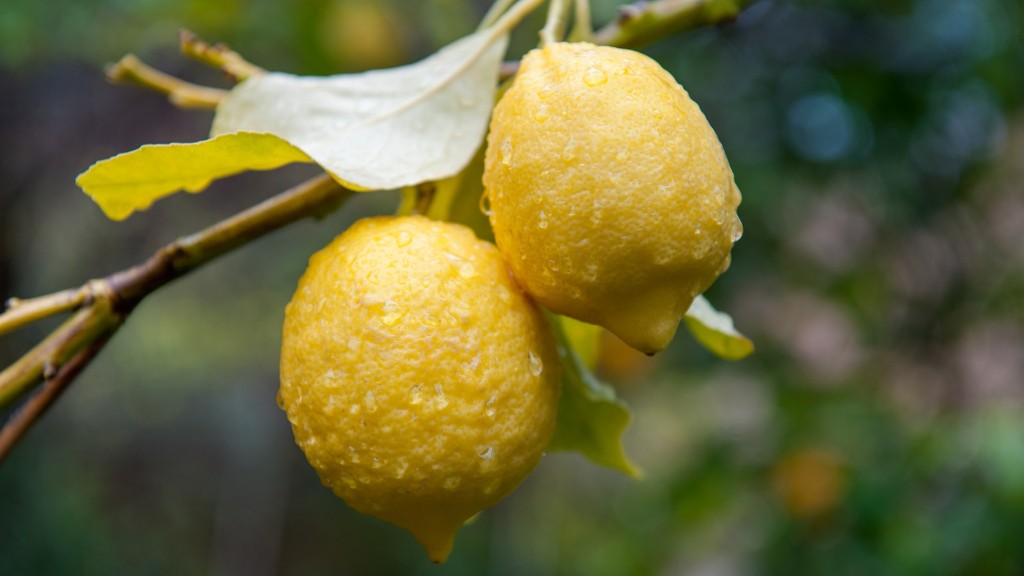Background on Transplanting a Small Palm Tree
Transplanting a small palm tree is not a difficult task. However, it is important to remember to take certain precautions during the process in order to ensure that the tree doesn’t suffer any damage during or after the transplantation. The most important thing to be aware of is the type of soil that the tree is being transplanted into, as this will have a huge impact on the success of the transplant.
The type of soil is important because it needs to be able to support the tree’s root system and provide enough nutrients for the tree to survive. As palm trees are often grown in a tropical climate, it’s important to consider the type of soil that is best suited to this environment. In general, humid, well-drained soils are best since they provide the ideal conditions for palm trees.
The size of the tree is also an important factor to consider. Small palm trees will need to be uprooted and transplanted carefully so that they aren’t damaged. It can be beneficial to wrap the root system of the tree in burlap or fabric in order to protect it from any damage during the process. This can make it much easier to maneuver the tree once it has been uprooted.
Tools for Transplanting a Small Palm Tree
The tools that are needed for transplanting a small palm tree are relatively simple. A shovel, bucket, and pick can all be used for the transplanting process. It is important that the shovel and pick are of high quality in order to avoid any damage to the tree’s root system. It’s also important to ensure that the bucket is large enough to accommodate the tree’s root system.
In addition to these tools, it’s important to prepare the new transplant site before beginning the transplanting process. This means digging a hole in the new soil large enough to contain the tree’s root system. The size of the hole will depend on the size of the tree’s root system, but it should be quite large. It’s also beneficial to add extra soil or compost to the hole in order to ensure that the tree has the nutrients it needs to thrive.
Steps for Transplanting a Small Palm Tree
Transplanting a small palm tree involves several steps. The first is to carefully remove the tree’s root system from its original location. This involves using the shovel and pick to gently loosen the earth around the root system and then lifting it out of the ground. It is important to take care when doing this in order to avoid any damage to the tree’s root system.
The next step is to place the tree’s root system into the prepared transplant site. This should be done carefully so that the tree’s root system is sitting at the same depth as in its original location. The root system should then be covered with soil or compost, and the area around the tree should be lightly watered. At this point, it’s important to ensure that the tree’s root system is properly secured in the new location.
The next step is to monitor the tree’s growth. Water should be applied regularly and the soil should be regularly checked for signs of health. It’s important to ensure that the tree is getting enough sunlight, as the palm tree will not be able to thrive without it. If the tree is not getting enough sunlight, it will likely suffer from stunted growth and even death.
Transplanting a Small Palm Tree in a Pot
Transplanting a small palm tree into a pot is relatively easy and can be done without too much trouble. The first step is to choose an appropriate pot. The pot should be large enough to accommodate the root system of the tree and have enough drainage holes in the bottom. This will ensure that the tree has the space and nutrients it needs to thrive in its new home.
The next step is to fill the pot with a soil that is suitable for the tree’s needs. This will usually involve a combination of sand and compost in order to provide the nutrients the tree needs to survive. Once the soil is in place, the tree’s root system can be placed in the pot and carefully secured with soil. It is then important to water the tree regularly, as this will ensure that it has enough moisture for successful growth.
Transplanting a Small Palm Tree in the Ground
Transplanting a small palm tree into the ground is a more involved process than transplanting it into a pot. The first step is to choose an appropriate location for the tree. This should be a spot that has enough drainage, sunlight, and space to accommodate the tree’s root system. Once the location is chosen, the next step is to dig a hole that is large enough to accommodate the tree’s root system.
The next step is to prepare the new site. This involves adding soil or compost to the hole in order to enrich the soil, as well as adding additional soil to the surrounding area. This will ensure that the tree has enough nutrients and support for successful growth. Once the hole is prepared, the tree’s root system can be placed in the hole and covered with soil. At this point, it’s important to ensure that the tree’s root system is properly secured in the new location.
The final step is to water the tree regularly in order to ensure that it has enough moisture for successful growth. Once the tree is established in its new location, it should start to grow and develop healthily. However, if the tree doesn’t seem to be thriving, it may be necessary to adjust the watering schedule or provide additional nutrients in order to ensure that the tree is healthy.
Fertilizing a Small Palm Tree
Fertilizing a small palm tree is important in order to ensure that it has enough nutrients for healthy growth. It’s important to choose a fertilizer that is specifically designed for palm trees, as these contain the nutrients that the tree needs in order to thrive. It is also important to follow the instructions on the fertilizer in order to know how much to use and how often it should be applied.
The fertilizer should be applied at the base of the tree’s trunk. This ensures that the tree can absorb the nutrients it needs for healthy growth. It is also important to water the soil after the fertilizer has been applied, as this will help the tree absorb the nutrients more easily. It is also important to monitor the amount of fertilizer that is applied, as too much can be damaging to the tree. It can be beneficial to periodically test the soil in order to ensure that the tree is getting the right amount of fertilizer.
Pruning a Small Palm Tree
Pruning a small palm tree is an important part of the tree’s maintenance. This involves trimming off any dead or diseased branches in order to keep the tree healthy. Pruning also helps to keep the shape of the tree and help it to grow in a healthy direction. In order to prune properly, it is important to use the correct tools and to follow the instructions on the tool. It can be beneficial to use a pair of pruners or a small saw in order to trim the branches.
It is also important to understand the process of pruning before beginning. This includes knowing when to prune, as some trees only need to be pruned once a year while others may need to be pruned more frequently. It’s also important to know which areas of the tree need to be pruned, as pruning too much can harm the tree. It’s also important to understand the different types of pruning in order to get the desired result.
Wrapping a Small Palm Tree
Wrapping a small palm tree is important in order to provide extra protection for the tree’s trunk and branches. This is especially important for trees that are located in exposed areas, such as near streets or high winds. Wrapping the tree will help to protect it from the elements and reduce the risk of damage.
Wrapping the tree is relatively simple and can be done with a variety of materials, such as burlap, fabric, or even plastic. The trick is to make sure that the material is firmly secured to the tree so that it does not move or come loose. It is also important to make sure that the material is not too tight, as this can cause damage to the tree. The material should also be removed periodically, as it will need to be replaced in order to ensure that the tree is properly protected.
Frequent Problems with Transplanted Small Palm Trees
When transplanting a small palm tree, it is important to be aware of some of the potential problems that can arise. One of the most frequent issues is disease, which can occur if the soil is not suitable or if the tree is not getting enough sunlight. Diseases such as fungal diseases or root rot can be damaging to the tree, so it’s important to be aware of any signs of disease. It’s also important to monitor the area around the tree for signs of pests, as these can also damage the tree.
It’s also important to take steps to prevent shock after transplanting a small palm tree. This can be done by adequately watering the tree, as this will help to reduce the amount of stress on the tree. It is also beneficial to add mulch or compost around the tree in order to keep the soil moist and protect the tree’s root system. If the tree appears to be unhealthy or suffering from shock, it may be necessary to provide additional nutrients or adjust the watering schedule.
Conclusion
In conclusion, transplanting a small palm tree can be a fairly simple process if done correctly. It’s important to choose the right type of soil and to provide the tree with enough nutrients and sunlight in order to ensure that it thrives in its new location. It’s also important to take steps to prevent shock and disease, as these can both affect the tree’s health and lead to stunted growth. Finally, it is important to provide regular pruning and wrapping in order to maintain the health of the tree. With the right care and attention, a small palm tree can be a beautiful addition to any garden.




